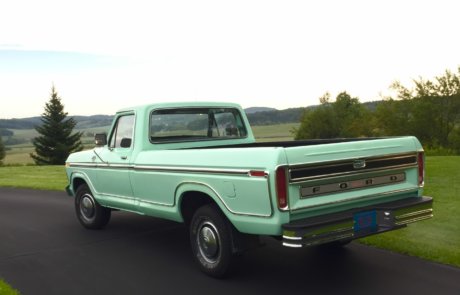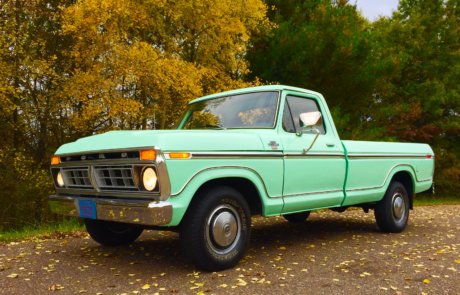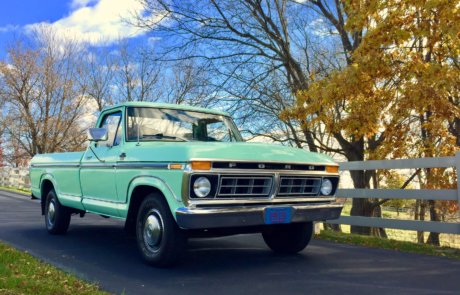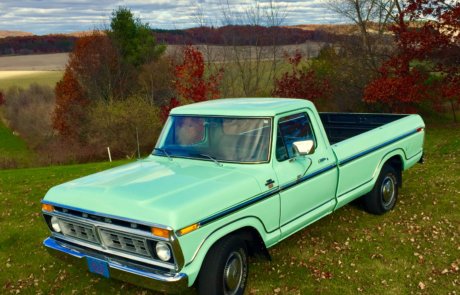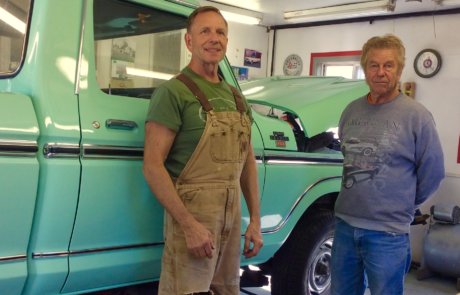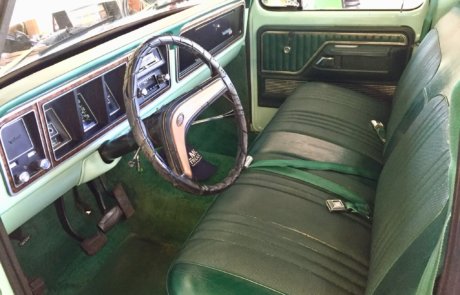City Barn Find
Have you ever experienced this? You’re driving through town or cruising along a country road and you catch a brief glint of sunlight as it flashes off a piece of relic chrome or glass, and you spy the familiar lines of a classic car or truck partially hidden by buildings or brush? You continue down the road thinking “that looked like the vehicle I’ve been searching for; the proverbial ‘barn-find!'” But, you dismiss your “Inner-Mecum” and continue on. Some time later you decide to go back, and either you don’t recall exactly where you saw it, or you arrive too late: it’s gone.
I had been in search of a ’60s or ’70s fixer-upper pickup for some time. The difficulty was finding one that was relatively “complete” and as near original as possible; running would be a bonus. It seems that trucks of this vintage, especially in this part of the country, are often significantly rusted, missing parts, overly modified, cobbled beyond reason, or just plain worn out. One afternoon I was driving near our university’s off-campus housing area when I had a glimpse of what appeared to be a ’70s Ford pickup parked on a congested side street. I had to get a closer look; I went back immediately.
The truck turned out to be a 1977 F100 in its original Light Jade (Andes’ Mint) color showing some minor rust and patina and, as it appeared, with all its original exterior chrome and interior fabrics in place. To me, this was the “barn find” on a city street.
I left a note on the windshield figuring there was no downside to letting the driver know I was interested in the truck. Within a few hours I had a phone call from the owner, a college student, who indicated he in fact needed to sell the truck as he would be graduating at the end of the month and moving out-of-state for a job. I didn’t hesitate to make an appointment to meet and give the truck a closer look.
After checking over the body, undercarriage, and drivetrain, I took the truck for a drive. Being original, the clutch, carburetor, exhaust, and steering needed some attention, but everything else was, for a 40 year old machine, in good condition.
The seller told me more about how he obtained the truck and I recognized that this was a “small-world” scenario in which I personally knew some of the people who were involved in this truck’s lineage, and the barn find reference would become literal, coincidental and pleasantly unexpected.
This F100 6 cylinder with a standard “three-on-the-tree” transmission was factory ordered by the current owner’s grandfather who had worked at the Ford garage in my Wisconsin hometown; the same garage where my brother Dick had worked part time as a teen. The grandfather, who also had a small dairy farm, was also on my dad’s rural mail route for decades. Even though the the truck was purchased for “farm” use, friends and neighbors of the original owner later told me that he rarely used the truck to do typical farm operations as he considered it more of his Sunday driver than a work truck. We closed the deal and I became the truck’s latest conservator.
Guided by LMC’s axiom of “Keeping Generations On The Road”, I ordered replacement parts for my new daily driver. Over the next few months the truck’s mechanical deficiencies were corrected and it was time for a road test. I drove the old Ford back “home” to show it off to Dick who smiled as I pulled into the driveway. He said, “I remember a truck just like this, it was owned by a guy I worked with up at the Ford Garage back in the ’70s”. He was stunned to learn that it was one in the same.
Even though he was no longer working at the dealership, Dick reminisced about seeing the “pastel green” truck when he’d stop in to visit. “That wasn’t a popular farm truck color”, Dick recalled, “I remember it because it was the same color I sprayed on my first project at that dealership; a 1961 Ford Galaxie”. The Dealership sticker that was applied upon arrival in 1977 is still adhered to the truck’s tailgate.
As a now sage restorer of many classics, Dick suggested that “we” eliminate the rust and give this classic ride its original sheen back. Dick’s meticulous pre-paint preparation, including the replacement of rear upper wheel arches with LMC Truck exact fit panels, and an overall media blasting of surface spot-rust, created a solid surface for the new base color and clear coats to encapsulate that “mint” look of the truck’s 1977 arrival.
Refreshed paint and new-old parts from LMC Truck make this quintessential Wisconsin farm truck a head-turner.
Jeff F.

